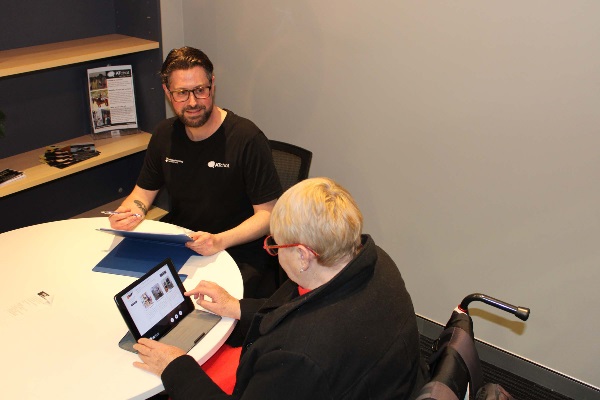Barriers and solutions to AT access for First Nations people
This article features research conducted by CultureLink and ThinkHQ.

Jaru woman Natasha Short knows that to help Indigenous Australians, you've got to look at the wider issues, like the relationship between community and Country. She's doing just that every day through her social enterprise Kimberley Jiyigas which aims to amplify Indigenous women's voices, promote Indigenous culture and enable more women-led businesses.
AT users can face barriers in terms of advocating for themselves around AT, which can be impacted by difficulties in accessing AT and necessary services such as health professional support, and First Nations AT users can face a range of additional difficulties. This article features research conducted by CultureLink and ThinkHQ.
Culture
For First Nations AT users who live in rural and remote communities, the barriers can be cultural as well as logistical.
If an individual needs to travel to access AT or service providers, they may face travel and accommodation costs, as well as costs from the time involved in planning and the visit itself.
It may also require leaving Country, as for many people according to Natasha Short, a proud Jaru woman, “they want to be with family, to stay on Country and close to traditional lands.”
If there’s a need to move for longer periods of time to access services, this can compound the issue, as in some cases individuals may choose to put up with difficult circumstances rather than leave their family and Country.
Cultural events in communities can also impact access to AT and services if not considered, for example, if there’s been a death in the community, payback, or sorry business, appointments will need to be put on hold.
Intergenerational trauma
One of the primary barriers to accessing AT for First Nations people in rural and remote areas as well as more generally, is that there are many other issues impacting people that are felt to be more pressing, such as the effects of intergenerational trauma.
The volume of financial priorities can also mean that, according to Elly Chatfield, a proud Gamillaroi woman, “a lot of our people are one day at a time people, they don’t worry until they’re there - forward planning is in the mindset of a non-Indigenous person”.
Communication
In terms of confidence around self-advocacy, the barriers can include the ability to communicate in English, as this may not be all individuals' native or preferred language, and as Poppy Reece at Australian Regional & Remote Community Services points out, they may also be, “too embarrassed to ask for a translator, or will just go in and pretend they understand but they don’t.”
Shame can also make an impact on whether people feel confident coming forward to ask for help, as there can be an understanding that, according to Shannon Firebrace, a proud Yourta Yourta man, “you never want to lean on family too much because we are all struggling ourselves.”
There can also be resistance to asking for help from a sense of wanting to have control in and over their lives, which as Elly Chatfield considers relates to the fact that, “a lot of stuff has been taken - jobs, children, identity,” which needs to be honoured as part of providing help.
Solutions
It’s through considering cultural identity that some solutions to the barriers of accessing AT can be found, by shifting the focus to linking the benefits of AT with family and community connectedness.
For example, Adam Schickerling, National Director Strategy & Engagement at Synapse Australia suggests that those providing services should align the notion of AT, “to what’s important culturally - what’s going to keep you strong - like to make sure you can get out of the house every day and see your family, you might need help to get around.”
As Adam Schickerling continues, “in many instances it can feel to First Nations people that communication around access to services comes with an expectation that they de-prioritise their cultural identity or explain their needs in a non-Indigenous way. This can mean that often services consider culture as a secondary consideration or layer, and it just doesn’t work like that.” It can mean that First Nations people need to explain what they need as a non-Indigenous person would think about it, in order to be understood.
Solutions, “need to come from an Indigenous view - looking at spirituality, intergenerational trauma, and connection to Country,” as Elly Chatfield points out, as well as considering the specific barriers that First Nations people can face.



